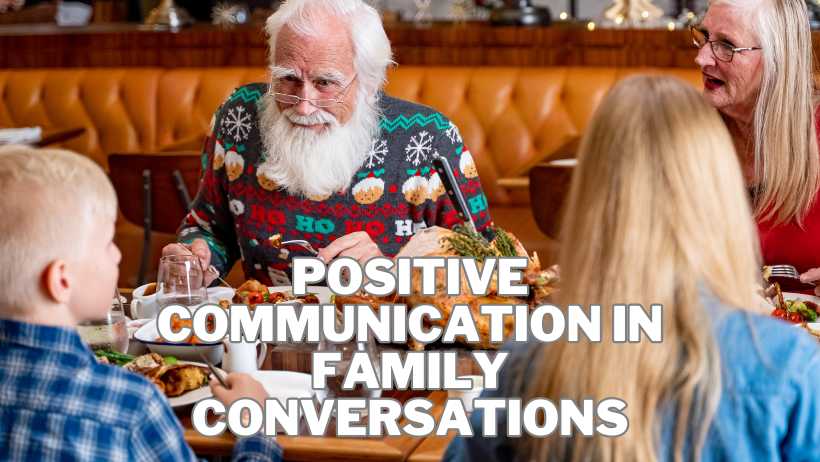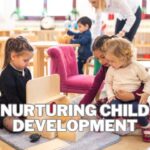
Learn how to cultivate positive communication in family conversations with strategies for active listening, resolving conflicts, fostering respect, and finding balance with technology. Expert insights for enhancing communication within your family.
“Harmony at Home: Cultivating Positive Communication in Family Conversations” explores the importance of effective communication within families and offers strategies for creating a supportive and nurturing environment at home.
By mastering the art of active listening, resolving conflicts through open dialogue, fostering a culture of respect and empathy, and finding a balance with technology, families can unlock the true potential of their bonds and create meaningful connections.
Active Listening: The Key to Harmonious Conversations
In any family, effective communication is essential for maintaining harmony and fostering healthy relationships. However, simply speaking and being heard is not enough. Truly understanding one another requires the art of active listening.
Active listening goes beyond just hearing the words being spoken; it involves fully understanding and responding to the needs and emotions behind those words. When we actively listen, we create a safe space for our loved ones to share their thoughts and feelings, and we strengthen our bonds of understanding and empathy.
To develop the skill of active listening, it is important to show genuine interest and empathy in conversations with our family members. This means giving them our undivided attention, maintaining eye contact, and truly focusing on what they are saying.
We should try to understand their perspective and feelings, rather than immediately offering advice or rushing to judgment. Through active listening, we can build stronger connections with our family members, establish better understanding, and resolve conflicts more effectively.
Resolving Conflicts Through Open and Honest Dialogue
Conflict is a normal part of any relationship, including those within families. However, conflicts should not be left unresolved, as they can lead to resentment and damage relationships. In order to resolve conflicts constructively, open and honest dialogue is crucial.
When disagreements arise within the family, it is important to address them in a constructive and non-judgmental manner. Encouraging open communication means creating an environment where everyone feels safe to express their concerns and opinions.
Active listening plays a vital role in this process, as it allows us to understand each other’s perspectives and find common ground. By engaging in honest dialogue, we can brainstorm potential solutions, compromise when necessary, and ultimately find resolutions that benefit the entire family.
Fostering a Culture of Respect and Empathy
Respect and empathy are foundational to effective family communication. When we treat each other with respect, we create an atmosphere of trust and understanding. This allows for open and honest dialogue, which is crucial for resolving conflicts and maintaining harmony at home.
Setting clear boundaries and expectations is essential for fostering respect within the family. This includes actively listening to one another without interrupting, using polite and considerate language, and refraining from belittling or criticizing one another.
By practicing empathy, we can put ourselves in each other’s shoes, understand their feelings and perspectives, and respond with compassion and understanding. When empathy and respect are at the forefront of family communication, meaningful connections and stronger bonds are formed.
The Role of Technology in Family Communication
In today’s digital age, technology plays a significant role in how families communicate. While technology can present challenges, it can also be a valuable tool for improving family communication.
One of the challenges technology brings to family communication is constant distraction. With smartphones, social media, and various digital devices competing for our attention, finding quality time to have meaningful conversations with our loved ones can be difficult.
To address this challenge, it is important to set boundaries and create designated “tech-free” zones or times when everyone can disconnect from their devices and focus on engaging with one another.
On the other hand, technology can also enhance family communication. Video calls, messaging apps, and shared calendars can help keep everyone connected and informed, especially when family members are physically separated.
These tools can bridge the gap and maintain strong bonds, even when distance separates us. However, finding a balance between utilizing technology for communication and ensuring face-to-face interaction is crucial.
Committing to Strategies for Effective Family Communication
Mastering the art of family communication takes time and effort from all family members. It is not something that can be achieved overnight, but with commitment and dedication, it is possible to create a supportive and nurturing environment where love, understanding, and meaningful connections thrive.
Recognize that effective family communication is a journey and be patient with yourself and your loved ones. Creating a supportive environment means being there for one another, offering emotional support, and practicing active listening. By nurturing love, understanding, and meaningful connections, we unlock the true potential of our family bonds and create a harmonious home that is filled with warmth and happiness.
In conclusion, positive and effective communication is the key to maintaining harmony and fostering healthy relationships within the family. By actively listening, resolving conflicts through open dialogue, fostering respect and empathy, and finding a balance with technology, we can create a home where love, understanding, and meaningful connections thrive. It takes commitment and effort, but the rewards are immeasurable. So embark on this journey of effective family communication, and watch as your relationships flourish and strengthen. Mindfulness for Kids and Teens – Information and Tips for Parents


















